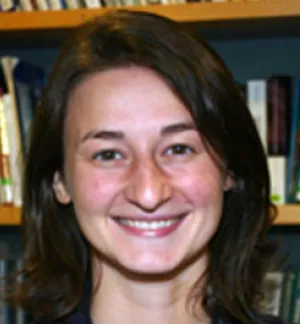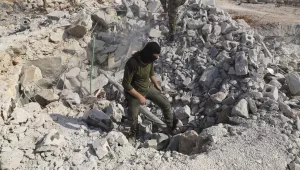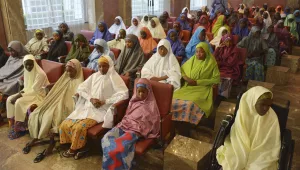Isolated for decades behind the Iron Curtain, the Central Asian states are an enigma to many. As the role of Islam in world politics has grown, government officials and observers around the world continue to lump their understanding of Pakistan and Afghanistan with that of the unknown “stans.” This is a grave mistake, with far-reaching consequences. Adeeb Khalid’s new book, Islam after Communism: Religion and Politics in Central Asia, is a welcome rebuttal to ongoing misunderstanding of the region. In this overview of the history and current role of Islam in Central Asia, Mr. Khalid’s theme is that there is no necessary relationship between Islam and politics in Central Asia.
While Afghan mujahideen battled the Soviets in the 1980s, Western observers predicted, and hoped, that Soviet Central Asia would become the next hotbed of Islamic insurgency, precipitating the collapse of the Soviet Union. Cold War-era scholars defined two realms of Islam in Central Asia. “Official Islam” included those mosques and imams associated with the Spiritual Administration of the Muslims of Central Asia and Kazakhstan, an organization set up by the Soviets to regulate Islam in the country. All other activity, termed “parallel Islam,” was considered a threat to the political establishment.
The assumptions, however, that Islam can be divided into two faces, and that the “unofficial” face is necessarily politically subversive, have not been validated—the Islamic bomb never exploded in Central Asia. Nonetheless, the legacy of this scholarship has outlived the Soviet era, and the lackluster quality of scholarship on Central Asia has been tolerated until only recently. Mr. Khalid challenges not only the Soviet legacy of scholarship on Islam, but also the simplistic Western understanding of Islam in Central Asia.
After Arab armies brought Islam to the region in the eighth century, Islam was increasingly indigenized as it gradually spread throughout Central Asia, so that local identities were viewed through an Islamic lens. To be a Muslim in Central Asia did not require the recitation of prayer or the memorization of passages from the Quran. “Rather, communities asserted their Muslim identities through elaborate myths of origin that assimilated elements of the Islamic ethical tradition with local norms and vice versa,” writes Mr. Khalid. The Russian conquest of Central Asia caused many changes, though Mr. Khalid is reluctant to describe them as simply “Russification” or “resistance.” In general, Mr. Khalid claims that Russian colonialism brought Central Asia into the modern world.
As elsewhere, the prospect of modernity provoked debate among Central Asia’s Muslims, most notably giving rise to the jadid (new method) cultural reform movement. Its proponents sought to redefine Central Asian culture through reform of the traditional maktab and the introduction of modern education. Mr. Khalid finally describes the rise of the Soviet government and its “assault” on Islam, i.e., the persecution of ulama, the destruction of mosques and madrassas, and the unveiling of women. According to the author, Soviet policies resulted in two important developments: Islam became localized and synonymous with cultural heritage, and the public realm was significantly de-Islamized. In other words, historical events in Central Asia made the form of Islam there quite different from that of Afghanistan or Iran, for example.
How this has affected the relationship between Islam and politics in present-day Central Asia is Mr. Khalid’s next focus. As national identity became salient during the Soviet period, the leaders of the Soviet Central Asian republics came to embody the nation, since they protected their people against the central government in Moscow. When this elite was left standing in newly independent states after the Soviet collapse, they continued their so-called guardianship of the nation. Because Islam had come to be viewed as part of each republic’s national heritage, the new states’ nation-building projects embraced Islam, including the construction of new mosques and Islamic institutions of learning, as well as the use of Islamic rhetoric and symbols.
Islam’s return to the public arena, however, did not reverse the developments of the Soviet period. Islam remains in the background of public discourse. Even if Central Asians want otherwise, political elites do not allow Islam to supersede nationalism or to challenge their legitimacy, and in no way is Islam allowed to participate in politics. Three known Islamic groups in the region, the Islamic Renaissance Party of Tajikistan (IRPT), the Islamic Movement of Uzbekistan (IMU), and the transnational Hizb-ut-Tahrir Islamic political party, all remain either in opposition or underground. In fact, the current regimes have used the argument of Islamic terrorism, which is especially convincing to Westerners after Sept. 11, to persecute Islamic groups and the outwardly pious. Yet, Mr. Khalid emphasizes that it is a fallacy to equate Islamic rhetoric with Islamic militancy. These Islamic groups do not have a large following. Many Central Asians, like their leaders, are wary of calls to give Islam a greater role in politics.
The U.S. has tended to support the current Central Asian regimes in their persecution of Islamic groups, albeit for its own practical reasons of maintaining the status quo in Central Asia or waging its war on terror. For example, in 2000 the U.S. officially listed the IMU as a terrorist organization, and Uzbekistan was later an important partner in the war in Afghanistan after the Sept. 11 attacks, allowing the U.S. military to lease its Karshi-Khanabad airbase. Nor have U.S. officials seriously criticized the IRPT’s lack of political access in Tajikistan, even though granting the IRPT the right to participate in politics was one of the stipulations of the peace agreement which ended the Tajik Civil War in the late 1990s. The deterioration in U.S.-Uzbekistan relations after the tragic events in Andijan, Uzbekistan, in 2005, may suggest that the U.S. will not thoughtlessly support the rhetoric of Uzbekistan’s officials, though one wonders whether U.S. criticism of Uzbekistan would have been muted had it still needed the Karshi-Khanabad airbase at that time.
Mr. Khalid’s contribution to current scholarship lies particularly in his nuanced retelling of the story of Islam and politics in Central Asia. He draws attention to the ahistorical and primitive view that some people have of Central Asia. For example, in the beginning of the 1990s, many treated Central Asia as if it had just emerged from the 1920s, ignoring the impact of the Soviet period. Others attributed political and social behavior to “clans,” which he calls an unfortunate essentialist term. Second, Mr. Khalid faults scholars’ simplistic portrayal of the attitude of Central Asian Muslims to their Russian and Soviet masters. In reality, those who worked for “official” Islam and cooperated with the government maintained authority within their communities, while those who moved outside the official realm did not necessarily oppose the government. In fact, few complaints or uprisings were couched in Islamic terms.
Likewise, Mr. Khalid criticizes the essentialist views people both within and outside the region hold of Islam, referring to it as either bad or good, official or parallel, normative or local, moderate or extremist, true or untrue. Instead, the author emphasizes that Islam has many faces and is internally diverse. Islam can be heterogeneous even within one country. Most importantly, the assumption that Islam is always tied to politics is untrue, and Mr. Khalid provides examples of religious and political authority held by different entities. These subtleties are important to analysis of Islam everywhere.
As with any scholarly work, however, Mr. Khalid’s account of Islam after communism raises some questions for further consideration. What is it about Central Asia that enables religion and politics to remain so separate? Is the independent variable here really the communist legacy? If so, how does the relationship between Islam and politics in China compare? China is only mentioned once by Mr. Khalid, and he dismisses its persecution of Muslims there as “shorter than the six decades of Soviet history.” One cannot ignore, however, the prominence of the issue of Islam in Chinese politics today, as the recent ban by the Chinese central government of pigs in television advertisements shows. Does the history of Islam in Central Asia or its development after communism provide any lessons?
On the other hand, should the independent variable be the Soviets? If so, one wonders why Mr. Khalid did not expand his account to include the Muslim minorities of the Russian Federation and other former Soviet republics—in particular, Azerbaijan, the only other former Soviet republic which is predominantly Muslim. In connection with this point, one cannot help but notice the overwhelming presence of Uzbekistan throughout the entire book in Mr. Khalid’s examples. Because the people of the present-day territories of Kazakhstan, Kyrgyzstan, and Turkmenistan were largely nomadic before the arrival of the Russians and Soviets, focusing on debates that occurred within the sedentary population of present-day Uzbekistan may not accurately represent the discourse that occurred in other Central Asian communities.
Overall, Mr. Khalid’s book represents the hopeful beginning of insightful scholarship on the relationship between Islam and politics in Central Asia. At a time when world attention is focused on the region, it is a must-read for scholars, students and politicians. As the author mentions in the conclusion, there are many sources of instability in Central Asia, foremost being the succession of Central Asia’s aging presidents. While there have been no signs of conflict following the recent death of Turkmenistan’s president, Saparmurat Niyazov, in December 2006, it will be interesting to see whether or not “accusations of religious extremism” play a role in the future. One can be certain, however, that Central Asian Islam will keep eluding simplistic explanations of the relationship between religion and politics, as Muslims in Central Asia continue to renegotiate their identities and attitudes towards the past and present.
Ms. Sypko is a research assistant for the Program on Central Asia and the Caucasus, which is sponsored by the Davis Center for Russian and Eurasian Studies at Harvard University.
Sypko, Susan. “Book Review: Islam After Communism: Religion and Politics in Central Asia.” Far Eastern Economic Review, March 2007




